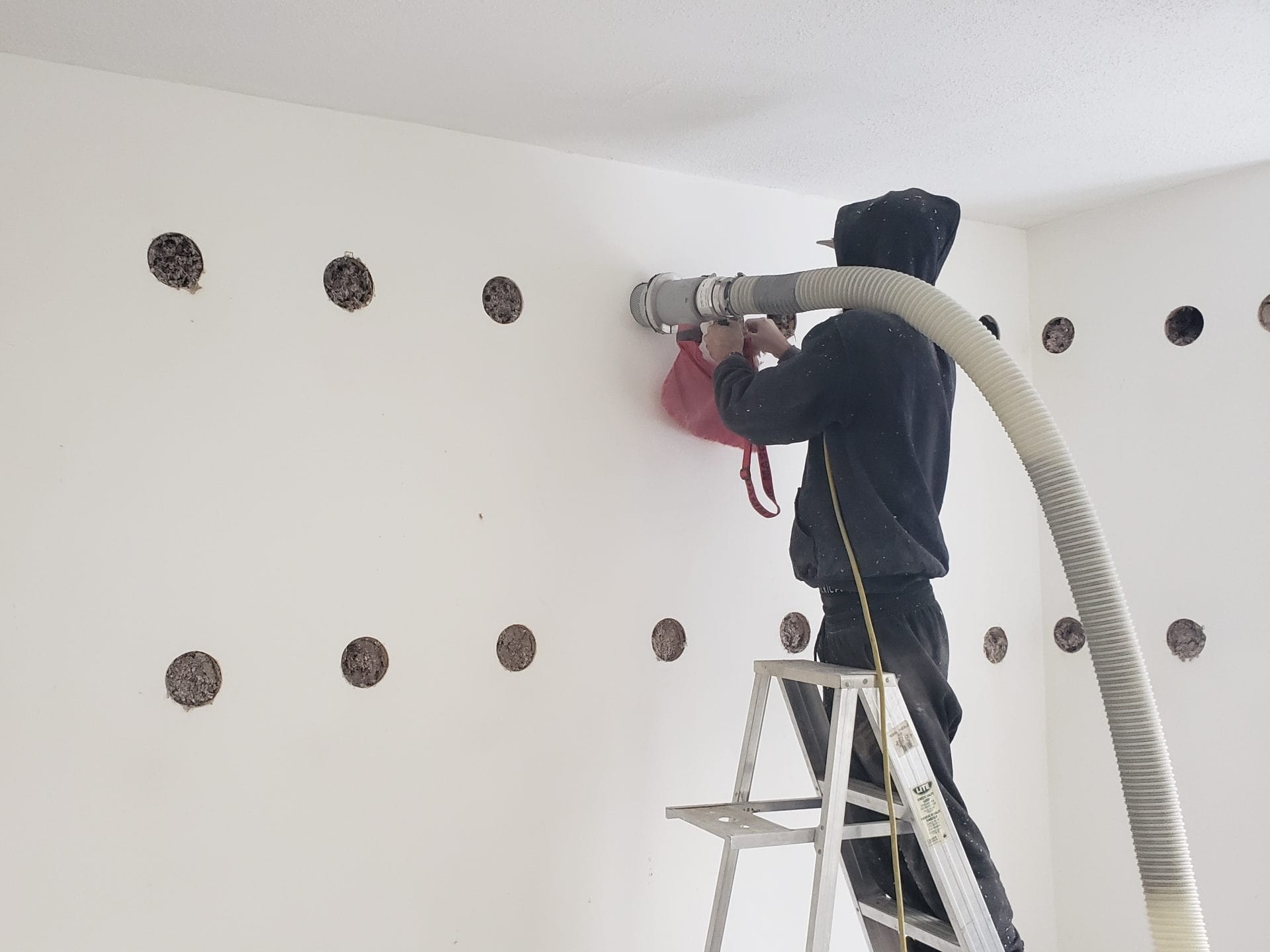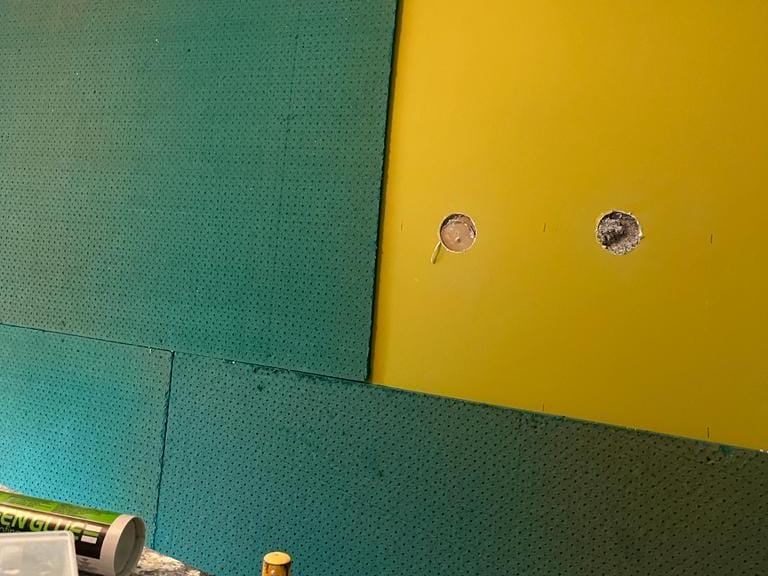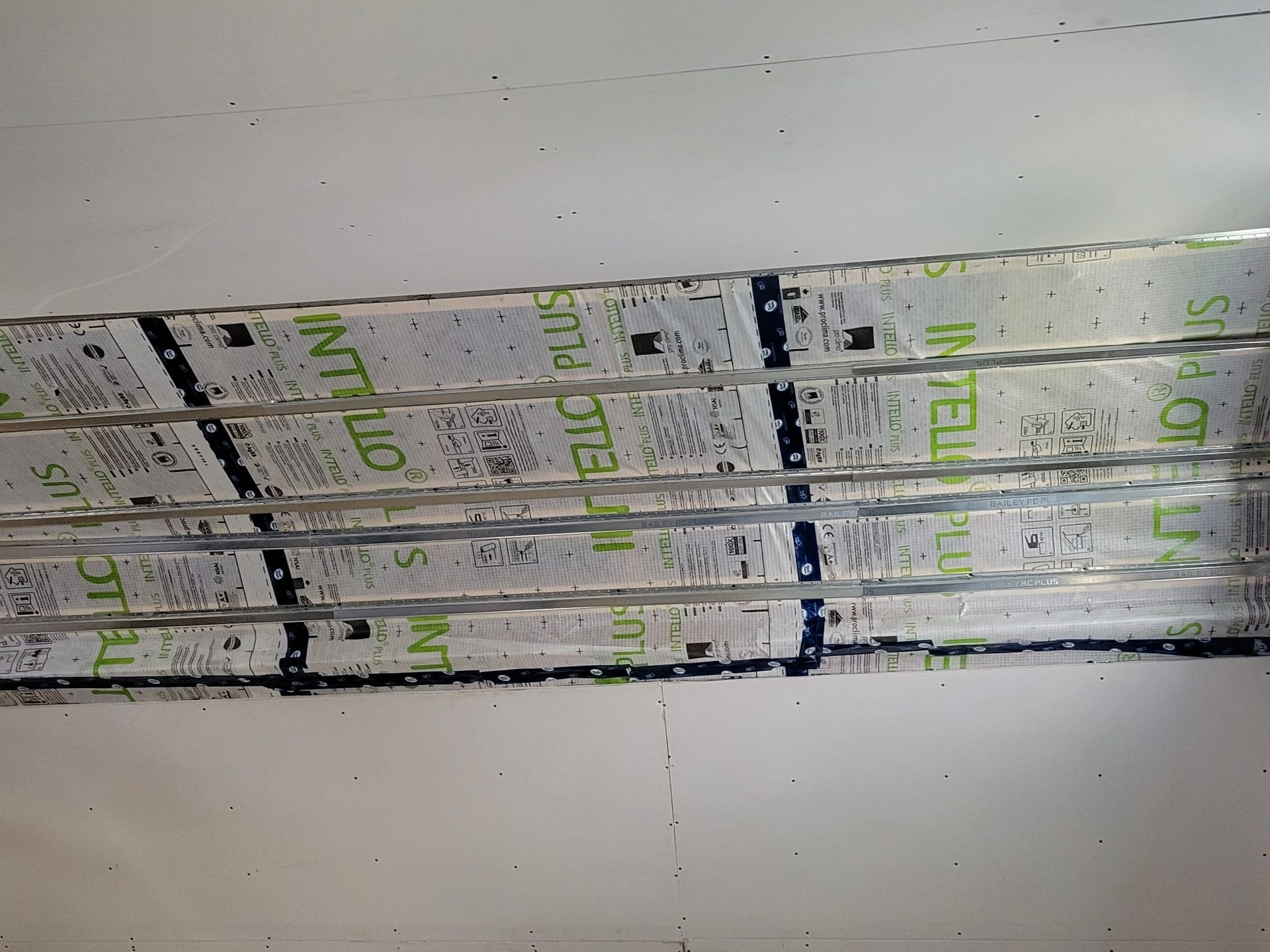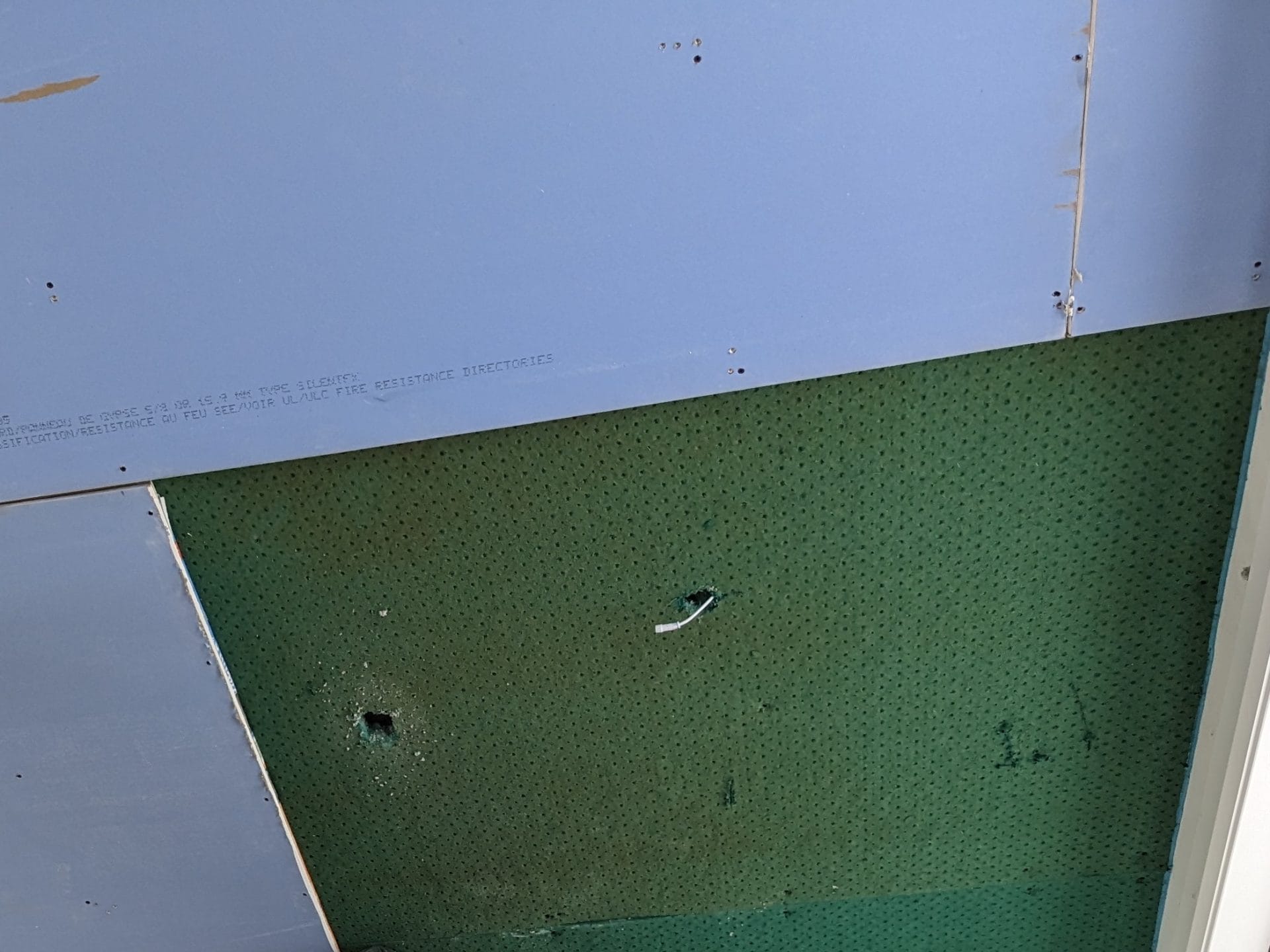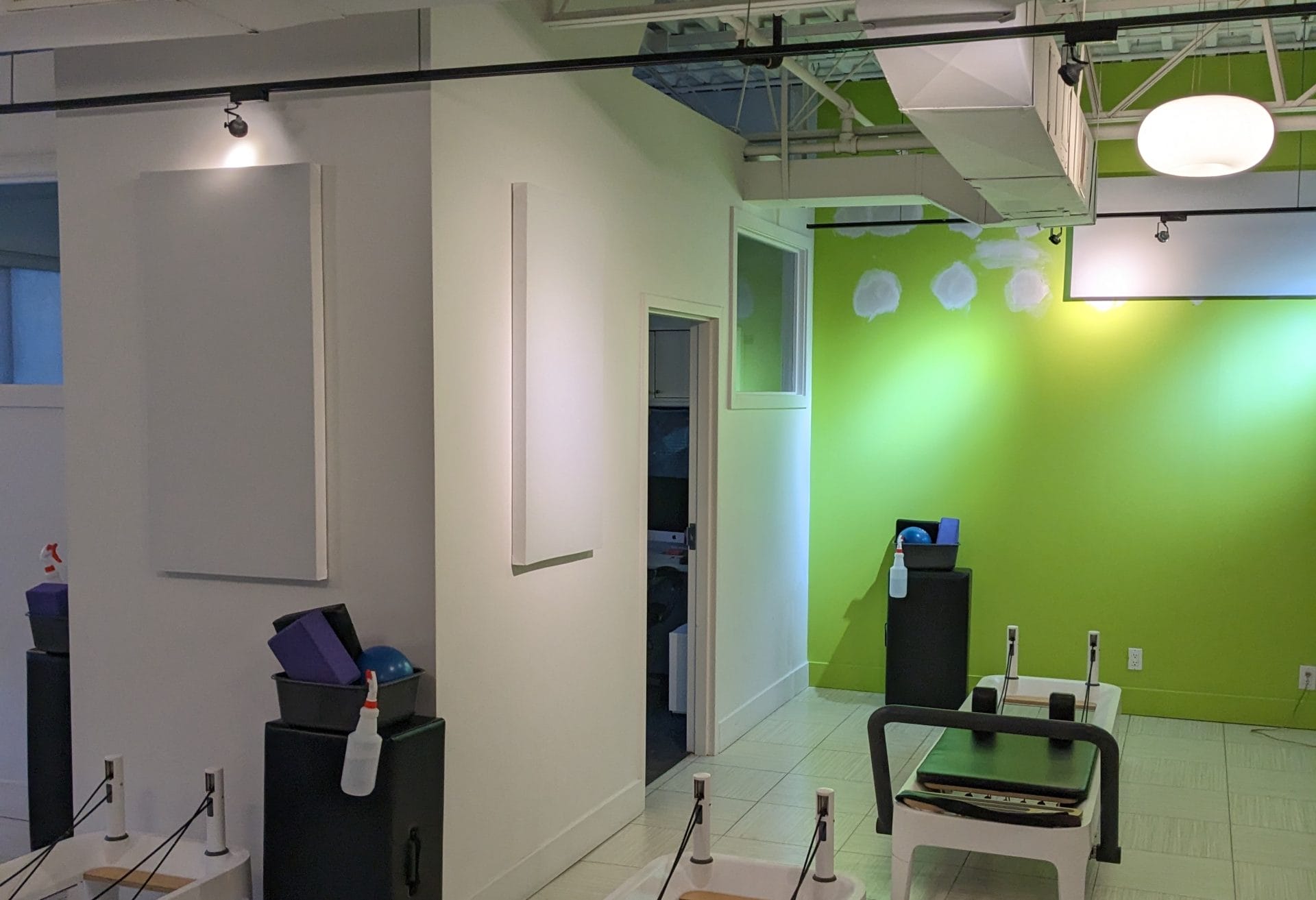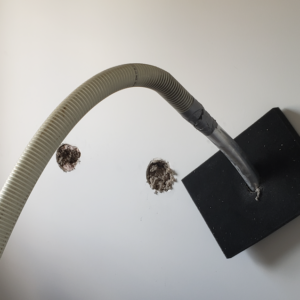In need of soundproofing services in the GTA (Greater Toronto Area)? Warm Cozy Cozy to the rescue! We offer soundproofing insulation services so that your home will be tranquil as we block airborne noise, but it will also provide better insulation overall.
How soundproofing works
When it comes to soundproofing, it is easier to contain thermal energy than sound. Because of the waves, it goes through anything, and concrete is no exception. There are two significant sounds: airborne sounds like your voice, lawnmower, and music. Secondly are impact sounds and vibrations like footsteps and deep base music. Each type of sound needs to be addressed differently using different materials.
However, it’s best to address them together for ultimate results. For example, airborne sounds are commonly handled by installing sound insulation between wall cavities like dense-pack cellulose or batten mineral wool. Additionally, acoustical panels can be added, such as sound and fire drywall or Sonopan. Impact sounds are rectified by filling the structure cavities with dense insulation and separating the walls or ceiling with channeling to attenuate impact noises.

How do I choose the right acoustical solution?
Whether you’re choosing sound insulation, acoustical panels, or channels, each has specific ratings regarding its ability to absorb (NRC), block (STC) or dampen (IIC) noises. Knowing what kind of noise you want to solve will help you choose materials for your project that meet your acoustical needs. Other factors that might impact your choice will be the building structure, and budget is also a decisive factor. For example, options can range from $7 to $9 sq ft for a dense pack drill and fill and more for a custom acoustical project. If you are looking for an affordable, quick, easy, non-invasive way to reduce noise, the dense pack drill and fill is the way to go.
Classifications and differences in sound insulations
Sound Transmission Class
An STC rating indicates how effectively a construction wall or floor/ceiling assembly resists the passage of airborne sound. A higher STC-rated product means better sound attenuation for the assembly.
Impact Insulation Class
An IIC rating indicates how well an assembly dampens impact vibrations, and the higher it is, the better. Impact noises are any vibrational or low-bass sound that travels through solid materials.
Noise reduction Coefficient
NRC measures how much sound a material absorbs on a scale of 0 to 1. At 1, all sound is absorbed, while at 0, none at all. It is being phased out in favour of the Sound Absorption Average (SAA).
Cellulose Insulation
Warm Cozy Cozy uses cellulose insulation primarily for our soundproofing projects as it has excellent acoustical qualities. Considering the cavities fill up with 3.5 lb of density, dense-packing cellulose is the best choice and is a pre- or post-construction product that absorbs sound, feedback, and echo. It’s acoustic ratings make it an ideal insulation material:
What makes our Dense-Fill so special?
Soundproofing a room can be expensive, but there are ways to soundproof a room without breaking the bank. One of the most popular ways is the Dense-Fill acoustic service which is the least invasive to your home because no drywall is removed. Dense-Fill soundproofing is a dense-pack technique in which a hole is drilled in the drywall, and insulation is
Dense-Fill
We use the dense-pack technique to fill the walls' cavities with insulation at 3.5-4 lb of density. It also includes patch repairs, so any hole drilled into the drywall is plastered. It can be painted over easily if you have the matching paint, or you can hire a painter to paint your walls afterwards.
Drill Holes
Dense-Fill Cavities
Install Pucks
Begin Drywall Patch Repair
Add first Coat
Plastering Patches
Traditional installation method
In post-construction, the traditional method is expensive because of the additional steps of removing the existing drywall and having to re-drywall and plaster the surfaces after installing the batten mineral wool insulation. Also, it is an expensive material; installation is more time-consuming and creates a renovation mess for a longer time. Therefore, we do not recommend it as it’s only second best in acoustic ratings for such a high cost. We may suggest using this method when needed. Otherwise, there’s no real reason to use this method anymore, as the dense-fill solution can solve your noise issue more economically with proven higher acoustical ratings!
Mineral Wool Insulation
Warm Cozy Cozy can add batten mineral wool insulation, also known as stone wool, Rockwool, and Roxul. It’s used for acoustic and thermal insulation, but it is best used in new construction because of its limited installation method. It’s acoustic ratings, and thermal aspects include:
Is your space in need of a custom sound barrier?
There are various ways to soundproof your home when considering sound control to prevent it from entering or leaving. We’ll provide a free estimate and design a custom sound barrier solution for your home. Try adding acoustic board panels if you want a custom-built barrier to fit your space with the best materials. First, choose the sound insulation you prefer that meets your needs, mineral wool or cellulose insulation. This image below will provide an STC rating of 140!
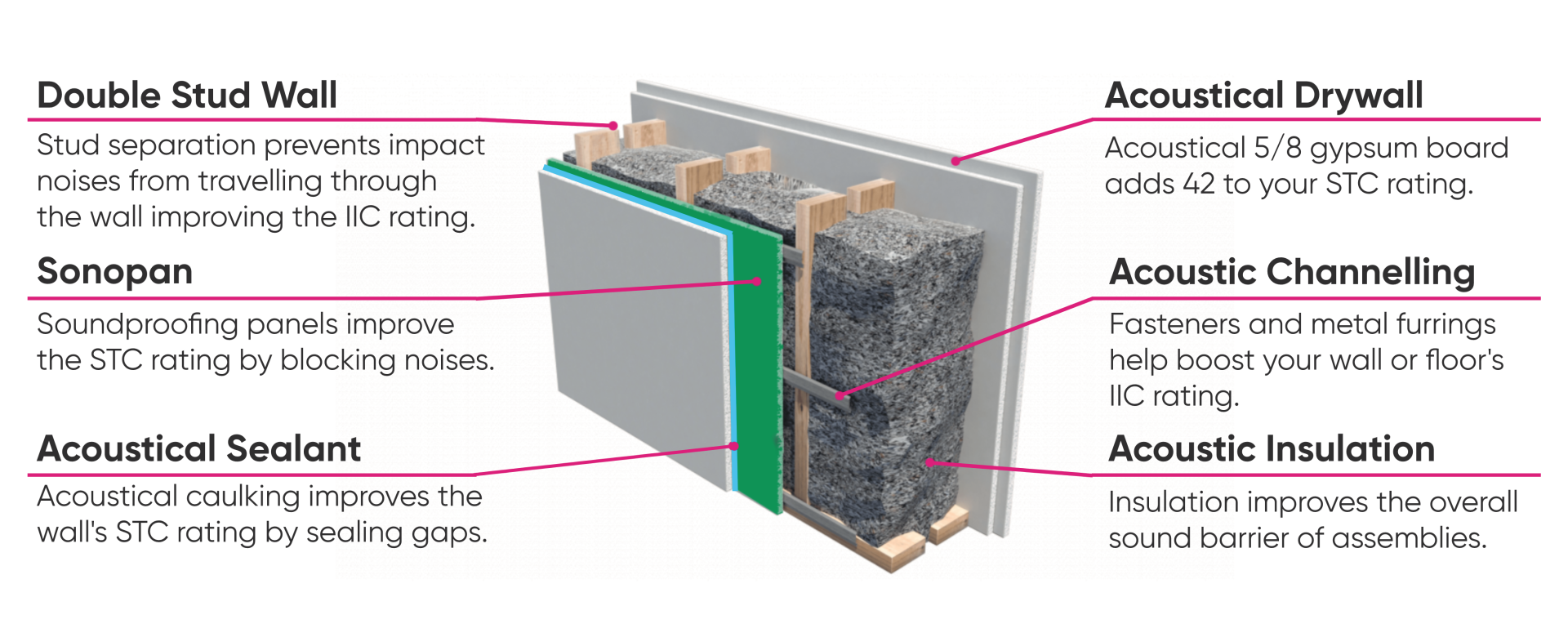
Whether you’re planning a home improvement, renovation, or building your dream home, we can assist you with any project, regardless of the size. We use sound absorption materials in combination with one another, such as sound insulation combined with SONOpan soundproofing panels explicitly designed to create sound barriers. We can also add acoustic fasteners with channels designed for decoupling to dampen impact noises in the ceiling combined with cellulose dense-pack insulation. Or add a layer of acoustical drywall to increase your STC rating by 42 applied over the acoustic panels or walls.

Soundproofing panels
SONOpan is made in Canada using 100% recycled wood fibre and dyed green using natural colouring. The dimpled surface on both sides helps to cancel a wide range of sound frequencies. And by installing cellulose insulation in the wall and ceiling cavities, you will notice a massive difference in sound absorption. The added insulation is an additional sound dampening medium to reduce resonance within the stud cavities.
Acoustics are only as good as its weakest point!
Finally, no matter how well you soundproof, the sound will only find its way through the space’s weakest point, which could be shared duct systems between rooms, hollow-core doors, or single-pane windows. Instead, you must separate the duct vents from one area to the other. As for doors and windows, you’ll need to install solid-core doors and upgrade your windows to double panes or add acoustical inserts to achieve optimal results.
